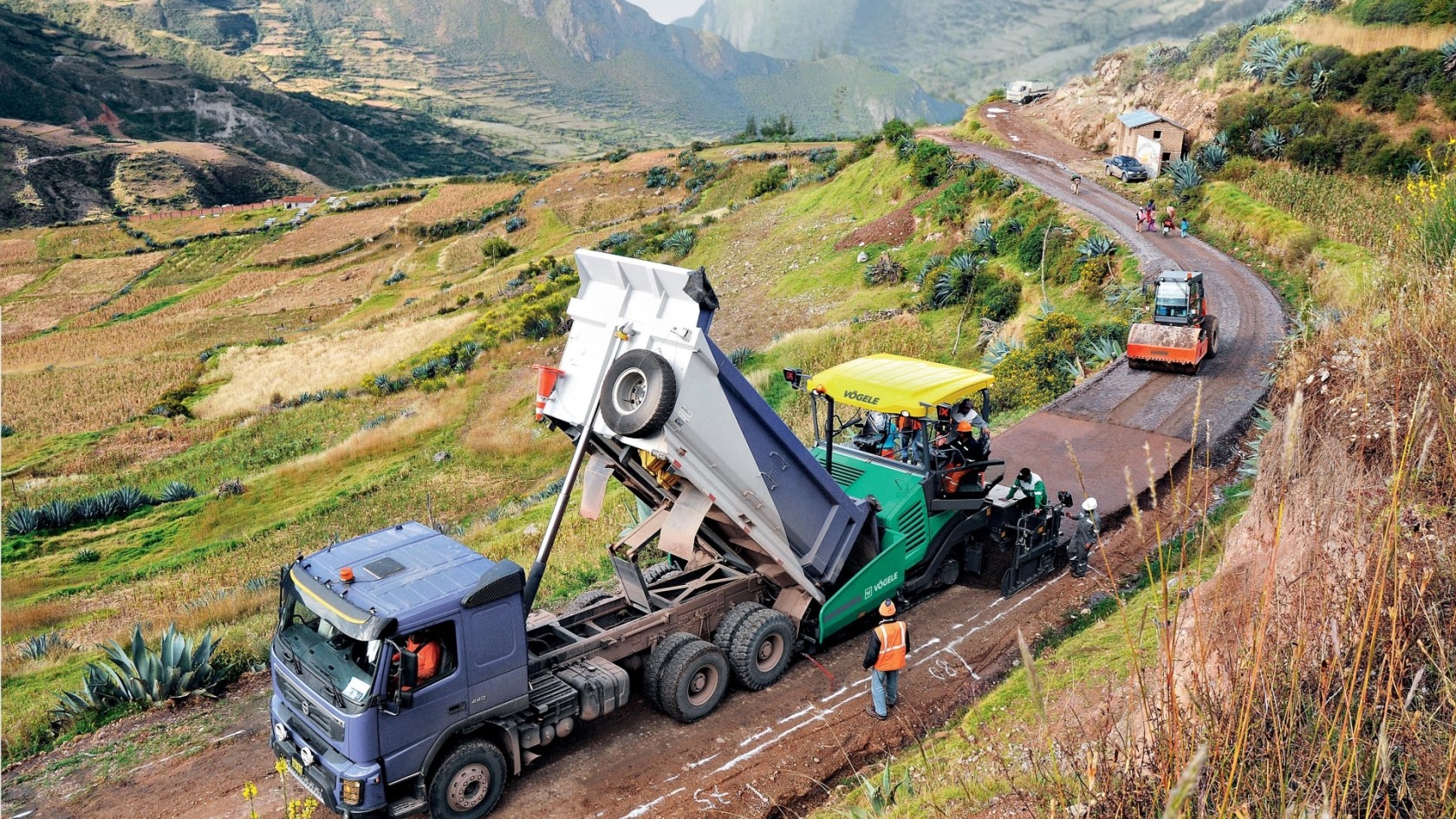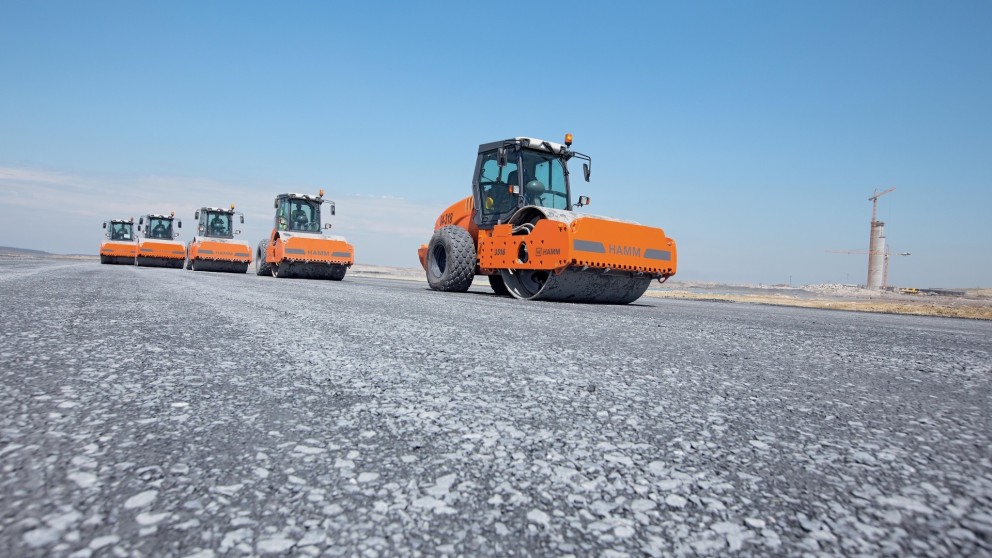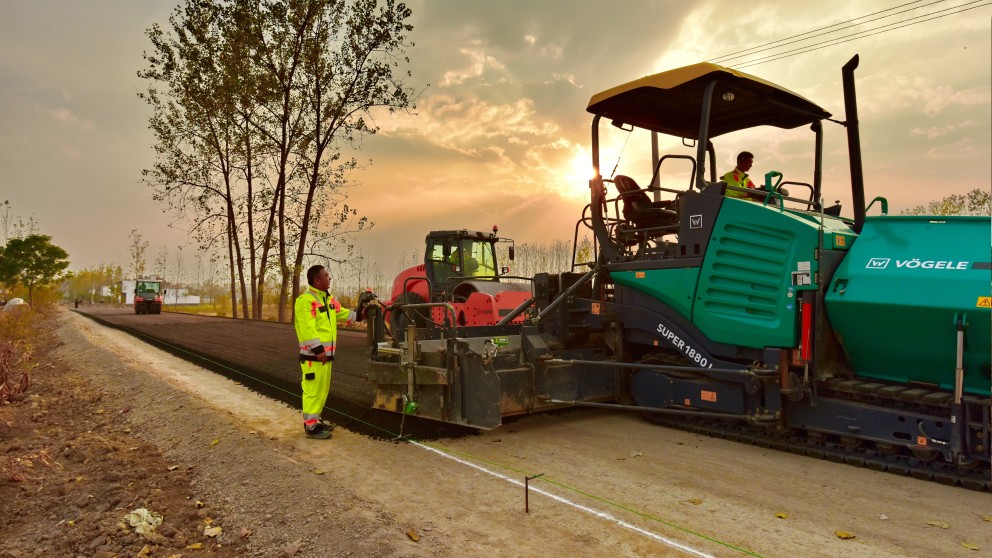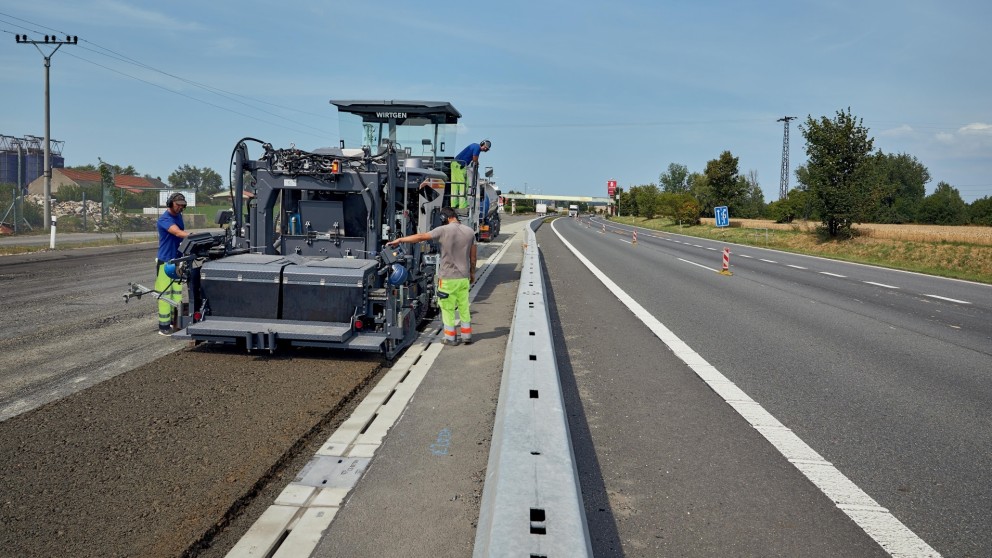Construction of Base Layers


The bottom layer essentially consists of an unbound mixture of coarse and fine crushed stone as well as crushed sand to achieve the desired bearing capacity and absorb traffic loads so that the underlying subgrade is not deformed.
The base layer forms the foundation for the road surface. Depending on the expected load, the road structure is composed of different layers of different thicknesses to withstand different weather conditions and to remain functional for decades.
Roads are exposed to particularly high stresses when the water contained in the pavement structure begins to freeze. Water expands when freezing, which can lead to frost damage that sooner or later will also have an effect on the road surface. This is prevented by means of a frost protection layer, which usually consists of a mixture of gravel and sand supplemented by crushed mineral aggregate. These layers of frost-resistant building materials conduct water away from the surface layer when compacted. At the same time, they effectively reduce tension within the road structure.
Hamm compactors perform extremely hard jobs in earthworks and – as seen here – when compacting the cement-treated base layer.
In many cases, a bound base layer is paved over an unbound base layer. Bitumen, cement, or lime are primarily used as binding agents.
Paving a base layer with a Vögele paver.
Mixes containing bitumen are referred to as hot-paved or cold-paved asphalt base layers, depending on whether the mix is hot or cold. The base layer is said to be cement-treated when cement or lime is used as binding agent.
Paving a cement-treated base layer with a W 240 CRi.
The base layer is said to be cement-treated when cement or lime is used as binding agent. Mineral aggregate mixes used for this type of base layer consist of uncrushed gravel or coarse aggregate, chippings, and crushed or natural sand. Recycled building materials are increasingly being added to these mixes.


